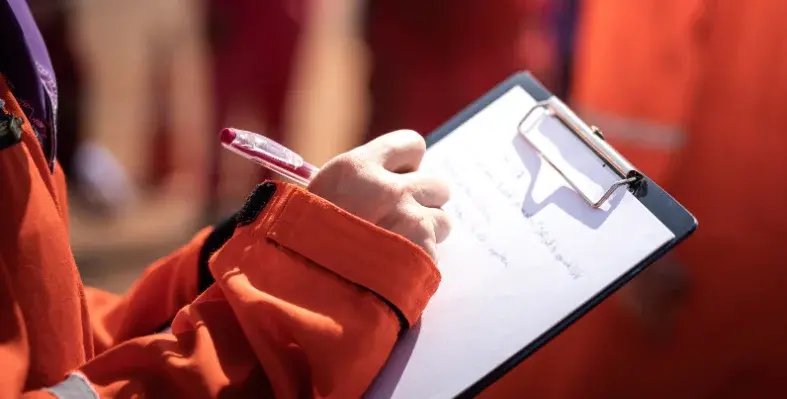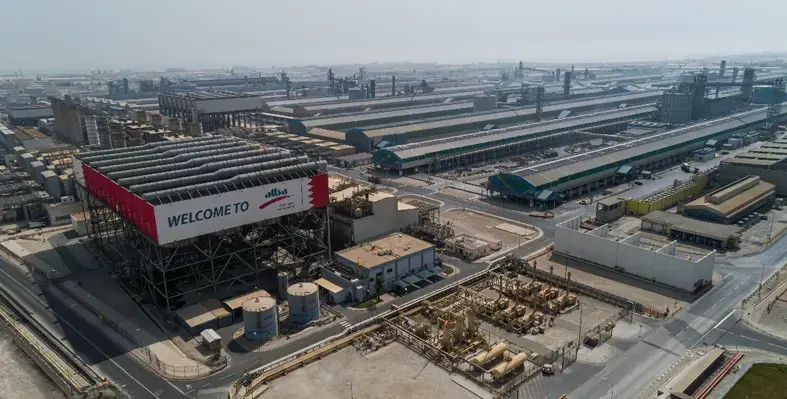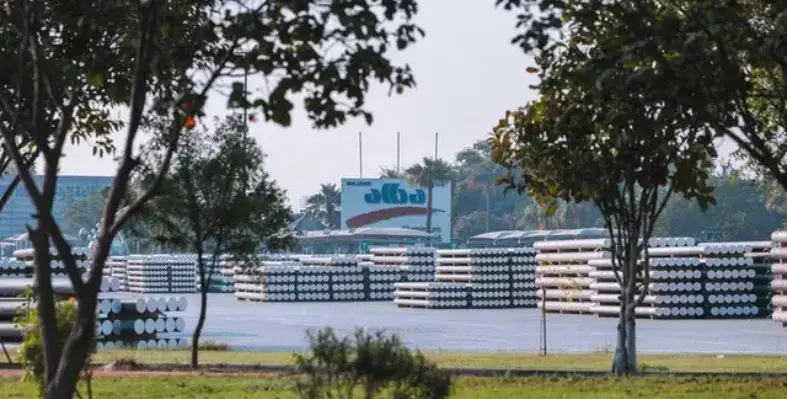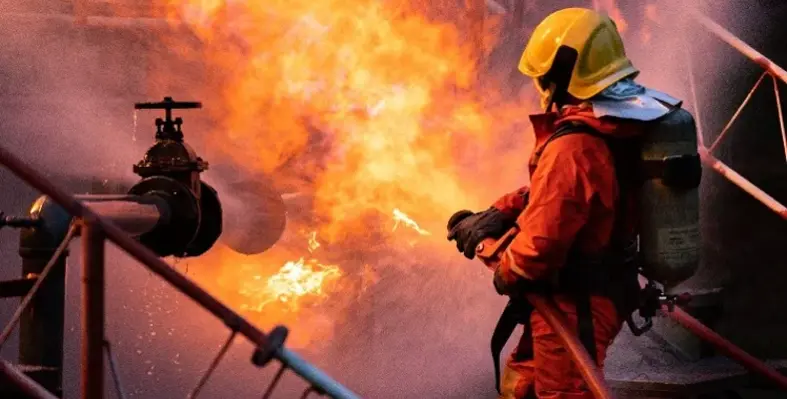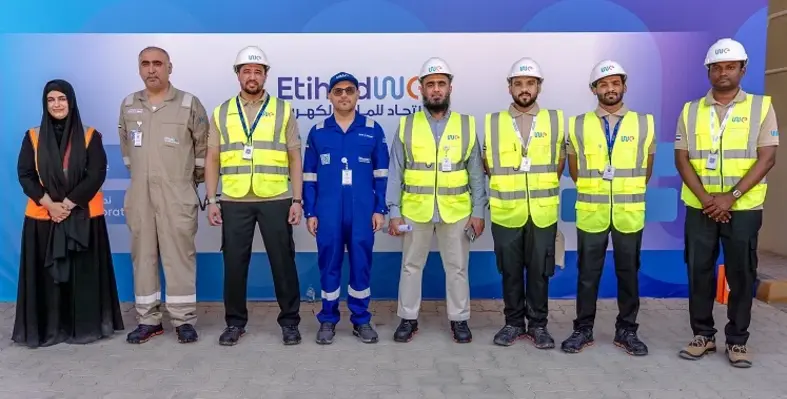Regional Coverage
Regional Coverage
- Details
- Matthew Hayhoe
- Europe
- Region: Europe
- Date: May 2025
- Year: 2025
Lloyd's Register Foundation's £15 million Global Safety Evidence Centre hopes to establish 'what works' in enforcing safety in the workplace, and plug solution gaps to improve industrial response to safety challenges
Citing the statistic that almost one in five workers (18%) experienced harm at work in the past two years, Lloyd's Register Foundation's centre invites industrialists to reach out for support and to partake in evidence-based initiatives.
Nancy Hey, Lloyd's Register Foundation's director of evidence and insight, said, "Evidence is critical to improving the safety of people and property; without it, we cannot fully understand the nature and scale of safety challenges faced by people around the world, nor what works to protect them from harm.
"However, around the world and across industrial sectors, many professionals, policy and decision-makers who need to consider safety do not have access to sufficient high quality evidence; either because it does not yet exist, or because it has not been collated and communicated to them in an understandable and actionable form."
Global researchers and safety practitioners are invited to apply for a share of £2 million put up by Lloyd's Register Foundation to support projects addressing evidence gaps in workplace safety.
- Details
- Louise Waters
- Middle East
- Topic: HSE
- Region: Middle East
- Date: 15 May 2025
- Year: 2025
Aluminium Bahrain (Alba) has recorded the best ever safety performance in its history
The company achieved a historic milestone of 35 million safe working hours without a Lost Time Injury (LTI) on 8 May 2025, reaffirming its position as a regional and global safety leader.
Alba’s chief executive officer, Ali Al Baqali, commented, “35 million safe working hours is a groundbreaking achievement in the global aluminium industry. This milestone is a testament to the thousands of moments of mindful action, the collective responsibility embraced wholeheartedly by each and every member of our dedicated workforce and the power of a shared vision for a safer tomorrow.”
Alba’s foundational ‘Safety First’ culture is strengthened by dedicated safety campaigns, comprehensive in-house training programmes, weekly Safety Talks and active shop-floor engagement by Alba’s executives, all of which play a crucial role in promoting a safer workplace for all.
This year, its campaigns have included a plant-wide Ramadan safety and health campaign, aimed at prioritising the safety and well-being of employees and contractors’ workers through a range of various interactive activities. These included lectures by external and internal experts as well as plant visits promoting meaningful engagement between management and shopfloor employees.
Over the past seven years, Alba has achieved an 87.5% decrease in injuries, underscoring its dedication to safeguarding its workforce.
A proven track record
The company’s safety performance has been recognised this year with the award of the Royal Society for the Prevention of Accidents (RoSPA’s) President’s award for the third consecutive year, and six major awards from the USA’s National Safety Council (NSC).
The RoSPA President’s award is given to organisations demonstrating exceptional Safety and Health performance over the years, and recognises the company’s commitment to ensure a safe and healthy work environment as well as setting global benchmarks in safety and health.
“At Alba, Safety is not just a priority or a practice, it’s the bedrock upon which all our operations and processes are built,” said Al Baqali. “We are not just building a safer workplace; we are building a culture of safety that prioritises the well-being of our people. Receiving this distinguished award for the third consecutive year proves that we are on the right track in our Safety journey and fuels our determination to advance with even greater dedication, ensuring the safety and well-being of our most valuable assets - our people, encompassing both our employees and contractors’ workers,”
Lord Jordan of Bournville, RoSPA's Life president, acknowledged the exceptional leadership and inspiration coming from the company’s CEO saying, “As one of the cornerstones of Bahrain’s economy, Alba sends out a powerful message to all industries. ‘You can be successful and safe’.”
The NSC awards are granted to organisations that meet strict criteria based on their safety performance in accordance with the OSHA requirements in the USA. The six awards scooped by Alba this year were the Million Work Hours Award, Occupational Excellence Achievement Award, Perfect Record Award, Safety Leadership Award, Significant Improvement Award and Milestone Award.
- Details
- Sania Aziz
- North America
- Topic: HSE
- Region: North America
- Date: 14 May, 2025
- Year: 2025
A growing body of research indicates that young people are increasingly dissatisfied at work. In a recent episode of the ILO’s Global Challenges, Global Solutions podcast, economist Professor David Blanchflower explored the rising levels of unhappiness among youth and the urgent need for action.
Blanchflower highlighted a major shift since 2013. “What we’ve seen is a big increase in the unhappiness levels of the young.” Originally noticed in the US, the trend has spread globally, particularly in developed nations like the UK, Canada, Australia, and Northern Europe. He notes that this rising unhappiness is linked to poor mental health, academic struggles, and difficulty transitioning from school to work.
“Young people who are having problems with their mental health—their test scores, their reading test scores are being negatively impacted,” he said, adding that the problem is evident at university level and beyond, with many young people “moving from college to out of the labour force.”
Internet access and smartphone usage are key contributors. “Places that have had the biggest growth in access to the internet, in general, are the ones that look the worst,” Blanchflower explained. He pointed out that in regions like sub-Saharan Africa, where smartphone penetration is lower, the mental health of young people appears more stable. “It’s about the amount of time they’re spending on their phones,” he added, warning that screen time is replacing real-world experiences vital for development.
A gender imbalance
Gender differences are also striking. “The mental health of young women appears to be much worse than young men,” Blanchflower said. In the US, “about 11% of young women between the ages of 18 and 24 say that every day of their lives is a bad mental health day.” This is accompanied by a rise in suicide attempts and hospitalisations, particularly among young women.
When it comes to solutions, Blanchflower called for better support during the transition from school to work and more structured social engagement for youth. “They’re not joining clubs as they did… They’re not participating in the ways that they did before.” However, he admitted, “We don’t really know what to do.”
He is organising a major conference with the UN to develop global strategies. “Countries around the world are going to have to start to think about what to do, as they did in the 1980s.” The goal is to identify practical measures that governments and international bodies can adapt to local contexts.
“This is like a spreading pandemic,” Blanchflower said. While the challenges are clear, he stresses the need for collective, global action before the damage becomes irreversible.
- Details
- Matthew Hayhoe
- Middle East
- Topic: HSE
- Region: Middle East
- Date: May 2025
- Year: 2025
Aluminium Bahrain (Alba) has announced EternAI-AC, a product series centred around incorporating carbon offsets gained from operational efficiency
EternAI-AC allows operators to select verified greenhouse gas offsets, originating from Alba's improved operational efficiency. The series includes a carbon reduction classification system rating offsets based on their footprint—from as low as net-zero to up to four tonnes of CO₂e per tonne.
Offsets listed on EternAI-AC series platforms can then be integrated into organisations' own carbon measuring and environmental strategies.
Ali Al Baqali, Alba's CEO, described the product series as "a game-changer in the low-carbon aluminium market. By embedding verified carbon offsets generated directly from our own operational improvements, we are offering our customers an unparalleled level of transparency and confidence in their sustainability journey, providing a distinct advantage in a world increasingly focused on carbon accountability."
- Details
- Matthew Hayhoe
- Middle East
- Topic: HSE
- Region: Middle East
- Date: May 2025
- Year: 2025
Saudi's Ministry of Human Resources and Social Development has announced plans to put government employees through mandatory occupational fitness testing
Provisional regulations are expected to apply to all employees and workers in public entities, private sector establishments, and non-profit organisations. New candidates will have to undergo tests prior to appointment. All tests will be conducted by specialists under the supervision of an occupational medicine specialist.
A survey platform has been published to invite the public and stakeholders to share their thoughts on the proposal, which spans three types of tests (general medical testing, additional specialised testing, and psychological testing) and aims to promote occupational health among government workers.
Tests will deliver tiered results, including: medically fit and permitted to practice the profession or job for which the candidate is applying; medically fit, with the restrictions or considerations required when practicing the profession for which the candidate is applying, including the duration; and medically unfit, with the restrictions or considerations required when practicing the profession for which the candidate is applying, including the duration.
Should occupational fitness requirements not be met, workers or candidates will not be allowed to continue practising their profession. Management will support them in changing their profession.
- Details
- Louise Waters
- North America
- Topic: Fire Safety
- Region: North America
- Date: 12 May 2025
- Year: 2025
Two Texas-based companies are joining forces in a move set to enhance the provision of fire safety solutions for the oil and gas industry
Total Safety’s Industrial Fire and Safety Division and Dooley Tackaberry, a specialist in fire and safety equipment for the oil and gas industry, are partnering to create a global market leader in industrial fire safety solutions.
Total Safety is a leading global provider of integrated industrial safety services, equipment and compliance solutions, covering sectors including oil and gas, petrochemical and refining, utilities, manufacturing, and transportation.
While Dooley Tackaberry (DT) has an extensive history in the distribution of fire and safety equipment to the oil and gas industry and municipal fire service market. It specialises in designing and fabricating fire detection and suppression systems as well as supplying fire protection and personal protective equipment for the upstream, midstream and downstream oil and gas industry worldwide.
The combined business will build on the respective strengths of the two companies, uniting common cultures and values and enabling rapid growth. Combining Total Safety’s in-plant fire systems inspection, testing and repair capabilities with Dooley’s engineering and fabrication capabilities will provide customers with unparalleled support in the upstream, midstream and downstream oil and gas industry.
“We are very excited to be joining forces with Dooley. Their strength in engineering and fabrication of industrial fire suppression systems compliments our team of in-plant fire technicians that perform inspection, testing and repair of critical fire systems,” said Brad Clark, CEO, Total Safety. “Our passion is to provide the best customer experience by serving our customers with the complete value chain of industrial fire protection.”
“Total Safety is the right strategic partner for Dooley, having similar core values and objectives in serving our customers. We are particularly excited about gaining access to Total Safety’s broad set of refining and petrochemical customers. Furthermore, Total Safety’s field installation capabilities will greatly enhance our ability to provide a trusted, one-stop solution to all our customers,” said Chris Dooley, CEO, Dooley Tackaberry.
Industrial fire protection is especially critical in the oil and gas industry given the presence of flammable and explosive substances. 16% of all fatalities in the industry are due to fires or explosions, according to Impact Fire’s Guide to Fire Safety in the Oil and Gas Industry, which highlights a multitude of common fire hazards, including equipment failure, leaks, oil spills, flash fires and confined space fires.
- Details
- Matthew Hayhoe
- North America
- Region: North America
- Date: May 8
- Year: 2025
After reporting a 39.5% reduction against baseline (2019) greenhouse gas emissions for 2024, Baker Hughes' chief sustainability officer Allyson Anderson Book said the company's approach "continues to be a key competitive advantage for Baker Hughes, helping us deliver long-term value to all of our stakeholders."
Delivering a 39.5% reduction in scope one and two emissions translated to a 29.3% absolute reduction against the 2019 baseline.
Amidst the more efficient backdrop, 206 perfect HSE days were delivered, with an 11% drop in total recordable incident (TRI) rate. Those figures, reported in Baker Hughes' reflection on 2024, mark the first time the company has ever externally assured such data.
Baker Hughes chairman and CEO Lorenzo Simonelli announced the news. "Our ability to drive economic growth and achieve significant emissions reductions underscores our commitment to sustainable energy development... by focusing on increasing efficiencies and integrating sustainability into our corporate strategy, we also enable our customers to meet their emissions targets."
- Details
- Sania Aziz
- Middle East
- Region: Middle East
- Date: 7 May, 2025
- Year: 2025
The International Code Council (ICC) has launched the 45th edition of its annual Building Safety Month campaign this May, aiming to raise awareness about the importance of safe and sustainable construction practices worldwide.
The campaign underscores the critical role of modern, consistently updated building codes in ensuring structural safety and resilience.
Running throughout the month, the initiative seeks to enhance understanding of the key elements and professionals that contribute to safe building practices.
This year’s theme, “Game On!”, is a call to action, urging individuals, businesses, and communities to engage in strengthening building safety through education and active participation.
From schools and worksites to city halls and job sites, the campaign promotes local involvement—especially in fast-developing regions such as the Gulf Cooperation Council (GCC) countries, where urban growth heightens the need for robust regulatory frameworks.
The ICC’s growing presence in the GCC region reflects the organisation’s belief in the necessity of enforceable, evolving building codes that keep pace with technological advancements, climate concerns, and population pressures.
This year’s programme also includes the second annual International Building Safety Day (IBSD) on 22 May 2025.
Introduced last year with backing from 28 international organisations, IBSD spotlights the link between building safety and public health, wellbeing, and economic resilience.
It serves as a global reminder to governments, policymakers and industry leaders to keep safety at the forefront of construction practices.
In celebration of Building Safety Month 2025, the International Code Council (ICC) and its global partners will mark the month of May with a series of themed weeks, highlighting the many facets of building safety through official recognitions, public education and community outreach.
Key themes
Building Safety Month 2025 will be marked throughout May with a series of themed weeks aimed at raising awareness about the critical role of building safety in everyday life.
The following weeks explore strategies for strengthening safety frameworks, from advocating for policy improvements to preparing for natural disasters. Professionals who uphold safety standards will be celebrated during the fourth week, while the final week, themed “Going into Overtime”, will examine emerging trends and innovations shaping global resilience. Through these activities, ICC’s campaign aims to foster a broader understanding of modern building practices and inspire ongoing commitment to safety across the built environment.
Mohamed Amer, managing director of ICC MENA, stated, “ICC MENA’s mission has always been to strengthen the safety and integrity of buildings while supporting the region’s extraordinary pace of development. As cities across the GCC continue to grow vertically and technologically, the importance of compliance with unified, robust building codes becomes even more essential, not only to protect lives and property but to drive sustainable and inclusive growth.”
He further added, “Building safety is not a one-time action; it’s a continuous commitment that involves government leaders, private-sector innovators and community stakeholders. Through our advocacy and partnerships, we aim to create a culture of safety that lasts for generations. We are proud to be participating in multiple regional events across the full ecosystem of building safety, and we’re pleased to see growing momentum around both Building Safety Month and IBSD — a timely reminder of the shared responsibility and collective action needed to elevate safety standards across the built environment."
- Details
- Louise Waters
- Middle East
- Topic: Industrial
- Region: Middle East
- Date: 6 May 2025
- Year: 2025
Etihad Water and Electricity (EtihadWE) held a week of awareness and engagement activities around World Day for Safety and Health at Work, which took place on 28 April
With the theme of shared responsibility and proactive prevention, the programme featured a range of initiatives aimed at strengthening occupational health and safety practices across all levels of the organisation.
A series of awareness sessions were organised in collaboration with the Civil Defence, involving staff involved in field operations and site supervision.
Other sessions, led by internal teams, addressed everyday risks and highlighted the importance of observing safe work practices.
Training and drills
The week also included interactive competitions, quizzes, and knowledge-sharing initiatives that encouraged greater involvement from employees across departments.
EtihadWE's Health, Safety and Environment (HSE) Department plays a central role in cultivating a safe and healthy work environment, implementing awareness programmes, including onsite guidance, first aid training, fire safety workshops, and targeted safety e-messages.
In 2024 alone, EtihadWE conducted 142 training sessions and 64 evacuation drills across various sites.
Additionally, regular inspections are carried out to monitor compliance with safety standards and assess work areas, helping to identify and mitigate potential risks.
The company also maintains a robust emergency response and evacuation framework, with clear protocols for scenarios such as fires, chemical spills, injuries, and natural disasters.
Eng. Yousif Ahmed Al Ali, CEO of Etihad Water and Electricity, said, “At EtihadWE, safety is a shared responsibility and a core value — not just a protocol. Our people are at the heart of every plan we execute and every service we provide, and it is our duty to ensure they return home safely every day. Through continuous awareness, active participation, and clear procedures, we aim to build a workplace where everyone feels empowered and protected.”
- Details
- Sania Aziz
- Europe
- Region: Europe
- Year: 2025
A groundbreaking report from the European Trade Union Institute (ETUI) has, for the first time, put a price tag on the economic toll of work-related stress across the European Union, estimating it at over €100bn (US$105bn) annually.
The study, titled 'Work-related stress and cardiovascular diseases', highlights the staggering financial and human costs of workplace stress, linking it to cardiovascular diseases and mental health disorders like depression.
The ETUI report reveals that work-related stress contributes significantly to cardiovascular diseases, which account for a substantial portion of the €100 billion cost. These expenses stem from healthcare costs, lost productivity, and absenteeism due to stress-induced illnesses. The study also underscores the mental health impact, with depression caused by workplace stress adding to the economic strain.
In 2015 alone, the report estimates that more than 10,000 workers died, and over 400,000 years of life were lost due to cardiovascular diseases and depression caused by work-related psychosocial risks. “These are preventable deaths,” said Dimitra Theodori, Head of Health and Safety at ETUI. “We urgently need to redesign work environments to protect both mental and physical health.”
The report identifies significant variations in stress levels across EU member states, with countries like Poland reporting higher rates of workplace stress compared to nations such as the Netherlands and Switzerland. France, Belgium, Finland, Ireland and the Netherlands rank among the five countries most affected in terms of cost per 100,000 workers. The cost of depression attributable to all five PWEs is for instance 2.2 times higher in the Netherlands than in Poland per 100,000 workers, or 2.3 times higher in France than in Portugal.
Women workers are disproportionately affected by psychosocial risks such as excessive working hours, job uncertainty, and workplace bullying.
A Call for Action
The ETUI urges employers and EU institutions to treat work-related stress as an organisational issue requiring collective action. The report advocates for stronger workplace policies, including better stress management programmes, improved working conditions, and greater support for mental health. It also calls for regulatory measures to hold employers accountable for mitigating stress-related risks.
“While workplace fatalities have decreased over the years, the toll of psychosocial risks continues to rise—often invisible, yet devastating. It's time to treat mental well-being as a fundamental workplace right,” said Theodori.
The sentiment is echoed in the ETUI’s recommendations, which emphasize collaboration between employers, unions, and policymakers to reduce the burden of stress.
Broader Implications
The report’s release comes amid growing concern over workplace wellbeing in the EU, with 51% of workers reporting that stress is common in their workplaces and 40% believing it is poorly managed, according to EU-OSHA data. The ETUI’s findings align with these concerns, warning that unaddressed stress could undermine efforts to build resilient and sustainable economies.
Social media discussions on platforms like X have amplified the report’s impact, with users highlighting the €100 billion figure as evidence of systemic workplace issues. Posts describe the cost as a reflection of “conditions that make people stressed or unhappy at work,” urging political action to address deteriorating work environments.
- Details
- Louise Waters
- Middle East
- Region: Middle East
- Date: 28 April, 2025
- Year: 2025
A new report from the International Labour Organization (ILO) explores how AI, digitalisation, robotics and automation are improving worker health and wellbeing in workplaces worldwide, while underlining the need for proactive policies to ensure these technologies are implemented safely and equitably
The report, titled Revolutionizing Health and Safety: The Role of AI and Digitalization at Work, highlights how robots help reduce risks and improve efficiency by taking on hazardous tasks, assisting in surgeries, and optimising logistics. AI-powered systems enhance safety and health monitoring, and streamline tasks and operations, easing workloads and driving innovation – even in traditionally low-tech sectors.
“Digitalisation offers immense opportunities to enhance workplace safety. Robots can replace workers in hazardous ‘3D jobs’, which can be dirty, dangerous, and demeaning. Automation can reduce repetitive tasks, such as in factory production lines or in administrative work, allowing workers to take on more challenging tasks,” said Manal Azzi, team lead on OSH Policy at the ILO. “But for us to fully benefit from these technologies, we must ensure they are implemented without incurring new risks.”
Technology’s impact on safety and health
The report highlights that advanced robotics and automation, the use of virtual and extended reality, as well as new tools such as smart wearable devices that provide real-time risk detection or environmental sensors that track air quality, are transforming safety and health by preventing accidents and reducing hazardous exposures. Furthermore, digitalisation is leading to the rise of hybrid and remote work arrangements that are creating flexibility and improving mental health.
VR is transforming training by providing immersive, interactive experiences for high-risk environments that are difficult to simulate theoretically, such as emergency response, fire training and working at heights. The report highlights an example from Qatar, where The Qatar Ministry of Labour, in cooperation with the ILO, launched a VR-based training programme for labour inspectors, which enhances OSH enforcement by allowing inspectors to explore virtual construction sites, identify workplace risks and correct safety violations without entering hazardous environments. The programme also improves guidance for employers and workers, strengthening compliance with OSH standards.
However, these advancements may also bring in new risks. While robots effectively take on hazardous tasks, workers who maintain, repair, or collaborate with these machines may face new dangers. Unpredictable robotic behaviours, system failures, or cyber threats can compromise safety. Ergonomic risks may arise from human-robot interaction, as well as from the use of wearables and exoskeletons that lack proper fit, usability, or comfort.
The study highlights that over-reliance on AI and automation may reduce human oversight, which would, in turn, increase OSH risks, while algorithm-driven workloads and being continuously connected can contribute to stress, burnout, and mental health issues.
The report also exposes safety and health risks faced by workers across the digital supply chain, from those in extraction processes to those powering AI, as well as workers handling electronic waste.
Global policy response and the role of the ILO
The report highlights regulatory gaps in managing OSH risks linked to digitalisation and calls for stronger global, regional, and national policies. The ILO’s OSH conventions (Nos. 155 and 187) provide a foundation for ensuring the right to a safe and healthy workplace in the digital era.
Policies and regulations worldwide increasingly include new measures covering robotic safety and human-robot interaction, the right to disconnect, improved algorithmic management of work, and safe telework and platform work.
Worker involvement is essential at every stage of technology adoption, the report argues. Training and awareness raising initiatives are key to ensuring safe use of new technologies. Further research will be needed to fully understand the long-term occupational safety and health impacts of digital transformation.
- Details
- Sania Aziz
- Middle East
- Region: Middle East
- Date: 24 April, 2025
- Year: 2025
With World Day for Safety and Health at Work approaching, it is an ideal time for businesses to reflect on the importance of maintaining health and safety in every workplace.
Gavin Scarr Hall, director of Health & Safety at Peninsula, says, “Health & safety is not just the responsibility of select few – it’s something that affects all of us, every day. Whether you’re in the office, at home or working remotely, we all play a vital role in creating and maintaining a safe environment. While great advances have been made, there are still far too many mistakes being made by businesses across the country many of which are easily avoidable and quick to fix. I’ve put together a list of the top 5 most common mistakes my team has found over the last year.”
Failing to display the Health & Safety Law poster
A surprisingly common oversight among businesses is not displaying the mandatory Health & Safety Law poster. The poster outlines the legal responsibilities of both employers and employees regarding workplace safety. Businesses employing staff are legally obliged to either display the poster where it is easily visible or distribute the official leaflet to each employee. “So, take it out of the drawer and get it on the wall,” urges Scarr Hall.
Not sharing risk assessments with staff
Completing a risk assessment is only part of the process; failing to involve employees is a mistake seen all too often. Staff typically have detailed knowledge of the practical risks associated with their work, and involving them helps create more effective safety controls. Sharing the outcomes also promotes greater compliance and fosters a culture of collective responsibility.
Neglecting health & safety training
Employers are required by law to provide appropriate information, instruction, and training to employees, contractors, and site visitors to ensure safe working practices. Training must be accessible, taking into account the varying language skills, educational backgrounds, and learning abilities of workers. Selecting the right method—whether classroom training, on-the-job instruction, or toolbox talks—ensures employees receive the knowledge they need to work safely.
Poor housekeeping practices
Workplaces must be kept clean and well-maintained, as required by safety and welfare regulations. Good housekeeping is essential not only for hygiene but also for accident prevention. Employers should implement formal maintenance and cleaning routines, while employees should also be responsible for keeping their workspaces tidy and hazard-free. Policies must clearly outline these expectations.
Overlooking mental health and work-related stress
Mental health issues are now the leading cause of workplace absence, with over half a million workers suffering from work-related stress in the UK alone. “The earlier an employee’s symptoms of stress at work are recognised the easier it is to control and manage,” says Scarr Hall. To address this, employers should implement a work-related stress policy that details the company's commitment to prevention and the measures in place to support affected employees.
